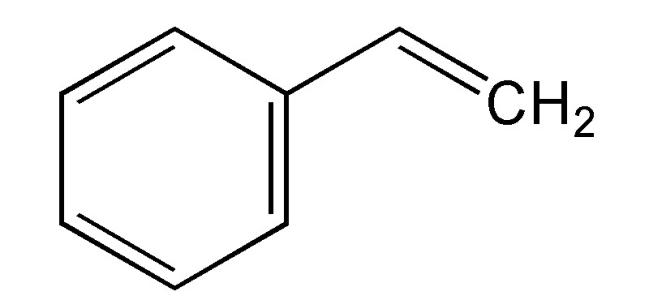With the deepening of the market's awareness of the concept of RTO and safety in the past two years, especially in the printing, pharmaceutical and spraying industries, RTO can be well used. RTO has a wide range of applications, can well solve the pollution prevention and control of complex working conditions, and the treatment efficiency is relatively stable. Below, our company will analyze the exhaust gas problems and corresponding solutions in the pharmaceutical industry through technical articles.
1. What is a polymer? What are the characteristics of polymer products? How will he affect the operation of the RTO, and what are the ideas for solving this blocking scheme?
The mechanism of the polymerization reaction: Among the hydrocarbon substances, styrene has a relatively large monomer activity. In terms of free radicals, styrene has less free radical activity among hydrocarbons, that is to say, styrene free radicals are inactive. This is because the double bond of the styrene monomer and the benzene ring have a conjugation reaction, the electron cloud on the double bond is easy to flow and polarize, and the ethylene bond is easy to crack uniformly, so the styrene monomer is active. When styrene forms styrene free radicals, the independent electrons of the free radicals can also be conjugated with the benzene ring and stabilized, so the free radicals of styrene are inactive. When polystyrene thermally initiates continuous bulk polymerization, its polymerization mechanism is based on a typical free radical polymerization process, which is always composed of three basic units: chain initiation, chain extension and chain termination.

Under the action of the initiator, the double bond of styrene is opened, and the diene addition reaction is carried out to form an intermediate product, and then the hydrogen atom transfer with the monomer generates primary free radicals, thereby triggering a large amount of styrene to carry out the polymerization reaction.
Polymerization is the process of converting low-molecular-weight monomers into high-molecular-weight polymers. Polymers have important properties such as plasticity, fiber-forming, film-forming, and high elasticity that low-molecular-weight monomers do not possess, and can be widely used as plastics. , fibers, rubber, coatings, adhesives and other polymer materials.
For example, styrene is vaporized and volatilized, filling the exhaust pipe and the upper space of the RTO. Due to the characteristics of easy polymerization, gas-phase styrene condenses and polymerizes on the ceramic regenerator and the upper part of the RTO grid wall, forming a polymer with a shape similar to stalactites and different thicknesses. , Often blocking ceramic regenerators, flame arresters, instruments and other accessories, affecting the normal operation of RTO, the normal measurement of instrument sensors, etc.
During the operation of RTO, the system has multiple environments and temperatures that may cause olefins to polymerize.
During the polymerization at 70°C, the polymerization conversion rate has reached more than 95% within 30 minutes, and the weight-average molecular weight of the obtained polystyrene has reached about 1010×105 in the early stage, and then basically no longer increases. When the polymerization is carried out at 50 °C, with the extension of the polymerization reaction time, the polymerization conversion rate increases smoothly, and the conversion rate reaches more than 90% for 1 hour of polymerization. The weight-average molecular weight of the obtained polystyrene gradually increased within 10-30 min, and then tended to be stable above 2010×105. Therefore, the polymerization product UHMWPS (polystyrene) is formed, and the polymerization reaction temperature is most likely to occur at about 50 °C.
2. The effect of polymerization products on RTO operation
With the production of polymer, the most direct impact is to block the heat storage ceramic, which will cause uneven temperature field distribution of the RTO ceramic heat storage body, resulting in agglomeration effect, which reduces the energy saving effect of the ceramic heat storage body. Excessive emissions. Secondly, it affects the pipeline. The polymerized polymer substances will be deposited in the pipeline and the lower chamber of the RTO, and some polymers will volatilize with the temperature change, resulting in high local concentration inside the pipeline, which brings security risks. In addition, these polymers will affect the normal operation of the valve and the measurement of the instrument, so it is necessary to focus on solving the impact of the polymer material in the RTO design of the fine chemical industry.
3. Solutions:
According to the characteristics of polymer materials and combined with research, the design of RTO for polymers can have the following three directions. There are many specific implementation methods, and only some processing directions are mentioned here.
1. Apply a polymerization inhibitor coating to prevent polymerization of the inner wall of the RTO;
2. Special grid structure design to prevent clogging;
3. Process setting heating program;
It should be noted that when RTO selects the heating process, the overall material needs to be considered and selected. If the anti-blocking cannot be achieved, manual maintenance is required if necessary to reduce the blockage of the ceramic regenerator.



